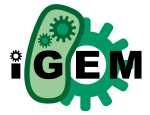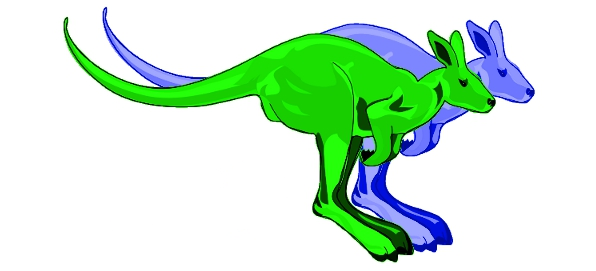Team:Macquarie Australia
From 2011.igem.org
(→Welcome) |
(→Abstract) |
||
| Line 77: | Line 77: | ||
<br> | <br> | ||
| - | <p style="font: 11pt Trebuchet MS">The objective in this project is to build and characterise a biological light switch in E.coli. This will involve construction of | + | <p style="font: 11pt Trebuchet MS">The objective in this project is to build and characterise a biological light switch in E.coli. This will involve construction of heme-oxygenase and bacteriophytochrome BioBrick parts. In 2010 the Macquarie Team cloned bacteriophytochrome from two sources. They showed that when one was expressed, it was functionally assembled when incubated with exogenous biliverdin; able to elicit a colour change when excited with far-red light. However, the part created is not directly usable as a BioBrick as it contains an internal EcoRI site (Deinococcus radiodurans phytochrome) and 2 PstI sites (Agrobacterium tumefaciens phytochrome). As the phytochromes require binding of biliverdin to work, which is not native to E. coli, the addition of heme oxygenase is required for the production of bilivedin in E.coli. The team from last year had managed to combine a ribosome binding site (RBS) to all 3 proteins of interest. Hence, this year, we aim to convert this 3 RBS-coupled protein coding region into usable BioBricks, and couple these BioBricks together to construct our light switch. </p> |
<br> | <br> | ||
Revision as of 11:25, 30 September 2011
|
|
Welcome
G'day from the 2011 Macquarie University iGEM group.
Here are some quick links to help you get started:
Abstract
The objective in this project is to build and characterise a biological light switch in E.coli. This will involve construction of heme-oxygenase and bacteriophytochrome BioBrick parts. In 2010 the Macquarie Team cloned bacteriophytochrome from two sources. They showed that when one was expressed, it was functionally assembled when incubated with exogenous biliverdin; able to elicit a colour change when excited with far-red light. However, the part created is not directly usable as a BioBrick as it contains an internal EcoRI site (Deinococcus radiodurans phytochrome) and 2 PstI sites (Agrobacterium tumefaciens phytochrome). As the phytochromes require binding of biliverdin to work, which is not native to E. coli, the addition of heme oxygenase is required for the production of bilivedin in E.coli. The team from last year had managed to combine a ribosome binding site (RBS) to all 3 proteins of interest. Hence, this year, we aim to convert this 3 RBS-coupled protein coding region into usable BioBricks, and couple these BioBricks together to construct our light switch.
Medal Progress
|
 "
"




 Registration of Team
Registration of Team